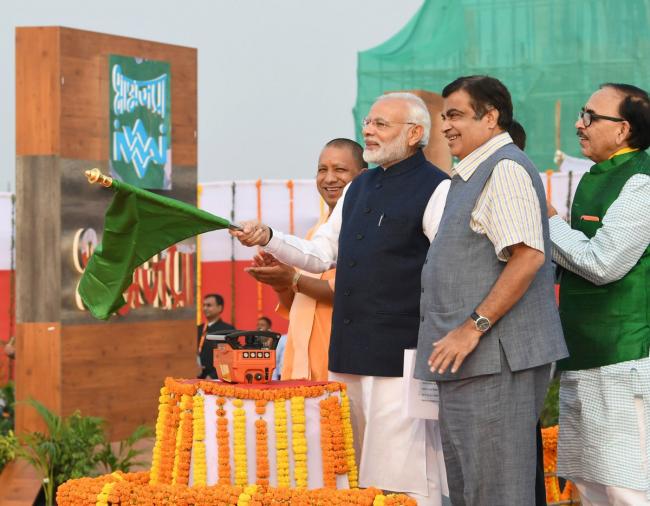Today, India scripted history as PM Modi reached Varanasi to receive first container vessel on inland waterways.
Prime Minister Narendra Modi reaches Varanasi, Uttar Pradesh. He will shortly inaugurate Multi-Modal Waterways Terminal and two major national highways pic.twitter.com/TjS2ayvhQ2
— TIMES NOW (@TimesNow) November 12, 2018
It is India’s first container vessel on Inland Waterways. Modi government pushed for using Inland waterways after coming to power and developed National Waterway-1, operating from Kolkata to Varanasi. Union Minister for Road Transport and Highways, shipping and water resources, Nitin Gadkari flagged off the first cargo container movement on 30th October 2018. The vessel carried 16 containers of food and snacks by PepsiCo India, a weight comparable to 16 truckloads. The containers were transported by MV RN Tagore, a vessel named after 20th-century poet and critic Rabindranath Tagore. On return, the vessel is set to carry IFFCO’s fertilizers from its Phupur plant to Prayagraj. PM Modi’s reception of the vessel has inaugurated the first multi-modal terminal on the Ganga river in Varanasi. The project is aimed at promoting inland waterways as it is cheaper and a more environment-friendly means of transportation.
The multi-modal terminals are being built as part of the central government’s ‘Jal Marg Vikas’ Project (JMVP) that aims to develop the stretch of the river Ganga between Varanasi and Haldia for navigation of large vessels weighing up to 1,500-2,000. tonnes.
Inland Waterways Authority of India (IWAI) – the apex statutory body created in 1986 for the development and regulation of inland waterways has been designated as the ‘Project Implementing Agency’ by the ministry of shipping.
The phase-1 of JMVP between Varanasi and Haldia is being implemented with technical and financial assistance from the World Bank amounting to $375 million.
The 1,360 km stretch of the Ganga River between Varanasi & the seaport of Haldia being named as National Waterway (NW)-1 would facilitate the transport of cargo and thereby result in the economic development of the region. The NW-1 passes through Uttar Pradesh, West Bengal, Jharkhand and Bihar, serving major cities like Varanasi, Prayagraj, Patna, Howrah, Calcutta, Haldia etc.
Junaid Ahmad, World Bank Country Director for India in his statement said, “Harnessing the mighty rivers of South Asia to build an effective multi-modal transport strategy will give the region a competitive edge on the global scene. This project will allow India to move goods seamlessly between road, rail and water, and bring down logistics’ costs. Importantly, this Project will help IWAI put in place environmentally-sustainable strategies for inland navigation that can be replicated on other waterways in India and other countries.”
Arnab Bandyopadhyay, Lead Transport specialist and the World Bank task team leader for the Project said, “The Government of India has an ambitious plan to develop more than a 100 waterways that criss-cross the country. This Project will also help IWAI strengthen its institutional capacities to steer the development of the sector in an efficient and environmentally sustainable manner.”
India is one of the largest importers of automotive fuels in the world. The growth in the economy has pushed the consumption of crude oil in the country and this also has raised the import bills of the country. Freight Transportation through waterways could bring the import bills down because it is more fuel efficient. In one litre of diesel, ships could carry 105 tonnes of load through waterways while roadways and railways can carry only 24 tonnes and 85 tonnes in the same amount of diesel respectively.
In terms of fiscal efficiency too, waterways transportation beats roadways or railways. The cost of transporting 1-tonne freight through waterways is 1.19 rupees on average while for road transportation it stands at 2.28 rupees and for railways, it costs 1.41 rupees.
In India, if we look at the freight movement through inland waterways it only stands at 0.5% while in countries like China and the United States it is more than 8%.
This move by the central government will pave the way for other developmental projects. Water navigation in the nation will also see the boost.
